

EXTRACTING THE ESSENTIAL
NATIONAL ACCOUNTS ON-PREMISE COMMERCIAL DEVELOPMENT




NATIONAL ACCOUNTS ON-PREMISE COMMERCIAL DEVELOPMENT

On-premise venue performance has been challenging overall yet has experienced mixed performance by channel throughout 2024. Casual Dining saw a decline of (-3%) in wine and spirits combined, while Neighborhood Bars dropped by (-4%). Fine Dining and Casual Nightclubs faced significant declines of (-10%) and (-13%), respectively. Conversely, Resort/Convention venues and Stadium/Arena/Convention centers saw increases of +6% and +10%. Wineries/Vineyards and Coffee/Tea Shops also performed well, with increases of +64% and +22%.
In the spirits category, there was an overall decline of (-5%), with Tequila and Vodka experiencing notable drops of (-5%) and (-6%). However, Cocktails saw a +9% increase within a smaller sales base. Wine experienced a (-4%) decline, with Sparkling Wine and Cabernet Sauvignon being the most affected, dropping by (-5%) and (-4%). Yet, some varietals are growing in dollar Volume including Sauvignon Blanc +3%, Rosé +2% and “Other Whites” +4% which includes unique white varietals and blends and identified as an emerging “worldly whites & sparkling” trend during Southern Glazer’s Liquid Insights Tour. Overall, while some venues and categories faced declines, others showed resilience and growth –including some spirit and wine brands, indicating a varied landscape in the on-premise market.
Source: SGWS Compass Total US On Premise Open States YTD LME September 2024
The US wine and spirits markets are facing significant challenges. Health and wellness trends have led consumers to opt for lower or no alcohol beverages, and younger generations prefer spirits and ready-to-drink beverages over wine. The perceived value of wine in the on-premise is poor due to by-the-glass menu prices exceeding retail bottle prices. Economic pressures, such as rising menu prices and inflation, have also played a role. There is an increased importance of evolving menu offerings, enhancing consumer experiences, and implementing balanced prices to navigate the current environment.
The explosive growth of ready-to-drink (RTD) cocktails is also impacting the market, with RTDs becoming increasingly popular due to their
convenience and variety. Meanwhile, rum producers are attempting to capture the interest of Gen Z after losing millennials. The post-COVID decline in wine and spirits consumption is accelerating, exacerbated by economic pressures and shifting consumer preferences. These factors combined are reshaping the beverage alcohol industry, requiring businesses to adapt to changing consumer behaviors and preferences to remain competitive.
Source: Industry Articles NRN, Forbes, Drinks Business, The Guardian, Food and Beverage Magazine, and Fast Company
The Liquid Insights Tour is complete, and the results, video, and press release can be found on the Southern Glazer’s Wine & Spirits Website. You can also read about the two final markets in blogs for Denver and New York City. Be looking for additional communications and a deeper dive into these trends for our On-Premise National Accounts!
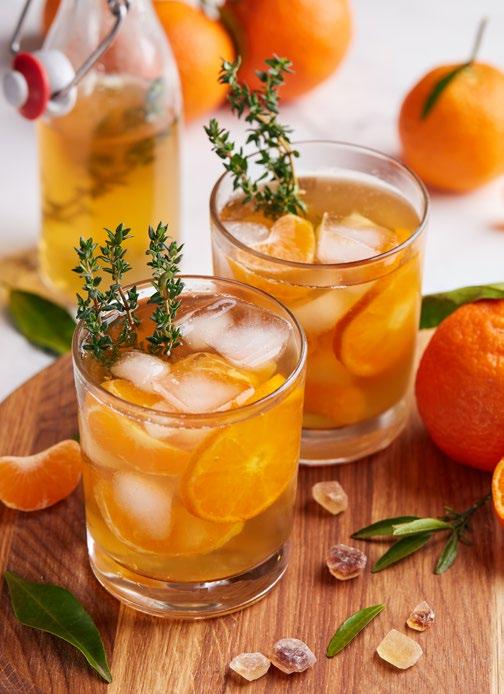


Four strategies to manage a weird restaurant consumer environment
“…A new white paper from consulting firm AlixPartners underscores the criticality in evolving menu offerings, enhancing the consumer experience, and implementing balanced prices.”
NRN 8/30/24

Are Gen Z really drinking less?
The generation reaching the legal age for consumption of alcohol is drinking less than older age groups, but the reasons behind this trend are contentious. Ron Emler investigates. Drinks Business 9/24
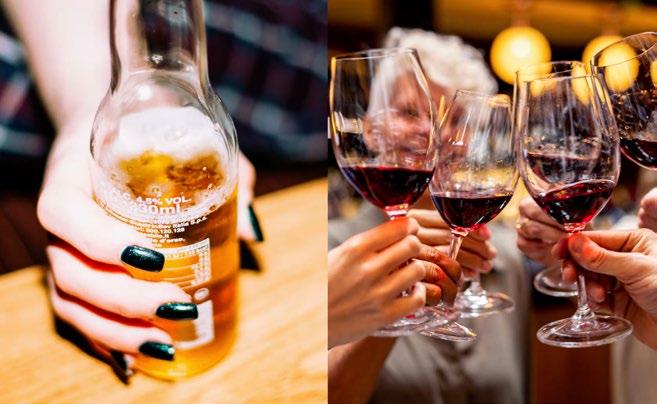
Stuffy, unhealthy or ‘just mid’ – are young people over wine?
The wine industry is worried that gen Z and millennials are turning away from the grape, citing cost, health risks and alternatives such as mocktails and marijuana
The Guardian 9/4/24

The Explosive Growth of RTD Cocktails: An Industry Deep Dive – What is the Impact?
This analysis delves into the latest trends, supported by National Retail Solutions(NRS) scan data, to provide a comprehensive overview of the current state and future potential of RTDs in the beverage alcohol (BevAl) industry
Food & Beverage Magazine 8/13/24

After losing millennials, can rum make a comeback with Gen Z?
A new generation of rum producers are hoping to capture the hearts of a new generation of drinkers.
Fast Company 9/1/24
The Post-Covid Decline Of Wines And Spirits Sales Is Accelerating
The post-COVID decline in wine and spirits consumption appears to be accelerating.
Forbes 10/10/24


CURRENT YTD THROUGH SEPTEMBER 2024
SPARKLING WINE
CABERNET SAUVIGNON
OTHER RED
CHARDONNAY
PINOT NOIR
SAUVIGNON BLANC
PINOT GRIGIO/PINOT GRIS
BLUSH/ROSE WINE
OTHER WHITE
MERLOT
SAKE
MOSCATO
RIESLING
Tequila holds the largest market share at 32%, showing a slight growth of +0.04%, driven by brands like Don Julio Reposado (+77%) and Espolòn Blanco (+10%). Cordials/Liqueurs have seen a notable increase of +0.64%, now holding a 12% share, with Aperol (+17%) and Kahlúa (+7%) contributing to this growth and on the tailwind of the popularity of Spritz and Espresso Martini cocktail popularity. Bourbon has also grown by +0.28%, reaching an 8% share. Vodka, despite having the second-largest share at 19%, is losing share to other categories (-0.04%). Rum’s share has decreased the most, down by -0.32% to 6%. Irish Whiskey and Canadian Whisky have both seen slight declines of -0.22% and -0.04%, respectively. Additionally, Gin, Brandy, and Scotch have experienced decreases in their dollar share.
In the wine category, Sauvignon Blanc has seen the most significant share growth, increasing by +0.58% to reach an 8% share. Chardonnay has also grown by +0.24%, now holding an 11% share. Blush/Rose Wine has increased by +0.24%, and Other White wines have grown by +0.17%, with Terras Gauda Albariño driving a +56% growth in this segment. Cabernet Sauvignon has experienced a minor increase of +0.03%, maintaining a 19% share. However, Sparkling Wine, despite leading with a 23% share, has decreased by -0.13%, particularly due to a decline in higher-priced sparkling wines like Champagne. Other Red wines have seen a significant decline of -0.57%, now at 13%. Pinot Noir’s share has also decreased by -0.40%, now at 8%.
Sources: SGWS Compass Open States CYTD LME September 2024

by Debbi Peek, Director of Mixology

Ice is no longer an oversight; ice is actually a crucial component in cocktails. Sometimes you want it to do more than chill or dilute a drink, so regular frozen water doesn’t always cut it. By adding herbs, fruit, juices and other ingredients, ice is able to play the role in cocktails, slowly adding to the aroma, flavor and appearance of a cocktail from the first sip to the last.
Ice cubes should complement the idea of the cocktail, e.g., herb-infused cubes for gin drinks, citrus-infused ones for those with vodka as their base. “But that doesn’t mean you can’t be creative!”
Try fresh herbs, berries and edible flowers (small flowers look great, or tear off a few petals). Place your add-ins in an ice cube tray. The possibilities are endless!
• Herbs: Basil, Mint, Rosemary, Thyme, Tarragon
• Fruit: Blackberries, Blueberries, Raspberries, Strawberries
• Flowers or Flower Petals: Make sure they are edible.
Top off the ice cube tray with some liquid to cover. Try juices or purees like Lychee, Passionfruit, Guava, Cranberry, Grapefruit, Orange, Lemon or Limeade.
Non-Juices, like Coconut milk (I found that full-fat works better than “lite”), Pea Flower Tea, Green Tea/Matcha, or Coffee. Just don’t try anything alcoholic, as it won’t freeze.
Freeze until solid. That’s it, you’re done. You can pop the cubes out of the tray and store them in a sealable bag until you’re ready to use them, so you can use the tray for a batch of, you know, just plain ice.


by Debbi Peek, Director of Mixology
1 ½ oz Vodka or Gin ½ oz Lychee Puree
2 oz Fresh Lime Sour 1 oz Lychee Sparkling Water Lychee Juice Ice Ball

Method: Shake all with ice except lychee sparkling water. Strain into glass over a lychee fruit juice ice ball. Top with lychee sparkling water. Lychee Juice Ice Ball: Add Lychee Juice to ice ball tray. Freeze.
We Can Thank New York City for Inventing the Lychee Martini
The drink first appeared in 1993 at Decibel, a NYC bar, though management origins are debated. The owner credits his brother with first serving the lychee martini at Decibel in Japan, which was then introduced to New York. The aim was to bring Japanese flavors to the U.S. beyond sake. However, a 1996 manager believes his New Yorkbased predecessor created the first lychee martini at Decibel.
A basic lychee martini recipe includes vodka, lychee juice, lychee liqueur,
vermouth, and a fresh lychee garnish. The lychee fruit, red on the outside like a raspberry but glossy white inside, offers a flavor akin to watermelon and strawberries with a rosewater hint. Its strong aroma makes the drink floral.
Less mainstream than espresso or appletinis, lychee martinis still grace many drink menus. Born in the ‘90s, a time of Asianfusion cuisine popularity in New York, its subtle sweetness pairs well with the spicy notes in many Asian dishes.
Source: https://www.tastingtable. com/1607495/new-york-city-lycheemartini/


COQODAQ | NEW YORK, NY
COQODAQ isn’t just about incredible fried chicken—it’s also a haven for cocktail and wine enthusiasts! This unique restaurant, visited during this year’s Liquid Insights Tour, was created by Simon Kim and Gracious Hospitality Management It offers a delightful fusion of Korean and American flavors, but what truly elevates the experience is their impressive beverage selection.
COQODAQ boasts an extensive wine list, featuring the largest selection of Champagne in any American restaurant. The bright acidity and effervescence of the Champagne perfectly complement the rich, savory flavors of their fried chicken, making each bite a celebration. Whether you prefer a crisp, refreshing glass of bubbly or a more robust vintage, there’s something to suit every palate. Another great aspect of their wine program is they feature 100 bottles of wine for less than $100 and delicious international wines offering a great entry price of $11 per glass.
The cocktail menu is equally exciting, with creative concoctions that highlight both classic and innovative flavors. From refreshing spritzers to bold, spirit-forward drinks, each cocktail is crafted to enhance your dining experience. The mixologists at COQODAQ take pride in using high-quality ingredients and inventive techniques to create drinks that are as visually stunning as they are delicious – in particular their #1 cocktail The Egg which is essentially a vodka martini or vodka soda served in a rocks glass over a lychee-infused eggshaped ice cube.
So, if you’re looking for a place where you can enjoy top-notch fried chicken paired with exceptional wines and cocktails, COQODAQ is the spot. It’s the perfect destination for foodies and beverage aficionados alike, promising a fun, flavorful, and unforgettable dining adventure!
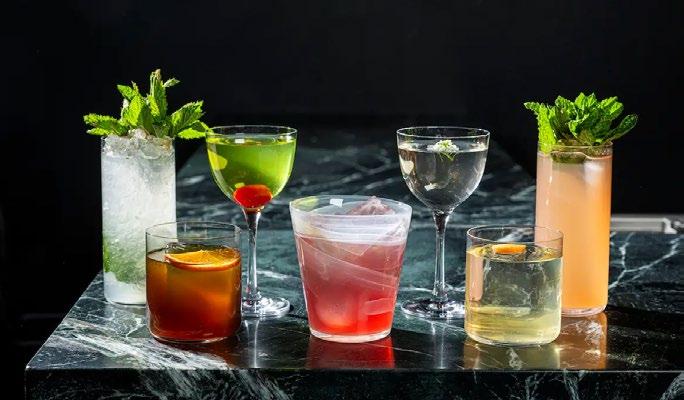
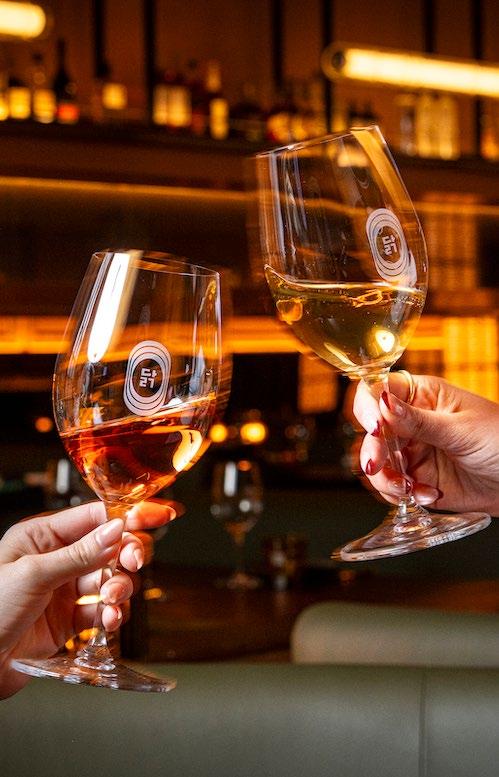
LTO APPROACH FOR Q 2 2025 SPRING FLAVORS

consumers shift from cozy red wines to more refreshing and light white wines. In the on-premise, wine growth has come from the “other-white” subcategory which includes unique varietals like Grüner Veltliner. Grüner Veltliner is a versatile white wine grape primarily grown in Austria. It produces wines ranging from light and zesty to full-bodied and rich, with high acidity and flavors of lime, lemon, grapefruit, and white pepper. Rotundone, responsible for wine flavor and aroma, is most abundant in Grüner Veltliner than any other white wine. Fresh herbal flavors and aromas not only work great in cocktails but can also be found in this unique varietal. Kracher from Terlato is an amazing Grüner Veltliner that pairs well with various dishes, especially those with creamy or fatty components, making it a favorite among wine enthusiasts and sommeliers.
Trending cocktail flavors for spring include dragon fruit (+45%), maple (+41%), walnut (+25%), and botanical flavors like lavender (+17%). The top 5 most popular flavors are lime, orange, lemon, pineapple, and strawberry. Consumers not only say that taste and price are important factors when choosing a cocktail, but the type of garnish as well. Around 12% of consumers say that garnishes are important when choosing a cocktail, so it is key to include garnishes that appeal to the season. During the spring season, floral garnishes become more popular. Garnishes typically are used for visual appeal, but it is a plus to also include a garnish that can be both visual as well as edible. The Lychee Rosé and Fleur de Paradis cocktails are a couple examples of featuring garnishes in this way.









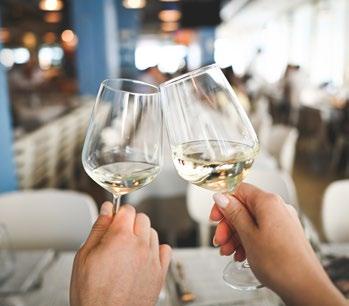
FLEUR DE PARADIS
INGREDIENTS
2 oz gin
3/4 oz St-Germain elderflower liqueur
1/2 oz grapefruit juice, freshly squeezed 1/2 oz lemon juice, freshly squeezed 1/4 oz simple syrup
1 dash orange bitters
Champagne, chilled, to top
Garnish: edible pansy
Source: Liquor.com / Kenta Goto
LYCHEE ROSÉ

INGREDIENTS
1 1/2 oz reposado tequila
3/4 oz salted lychee cordial
1/2 oz manzanilla sherry
1/2 oz elderflower liqueur, like St-Germain
1/2 oz lime juice, freshly squeezed
Garnish: edible flower petals
Source: Liquor.com / Adam George Fournier




